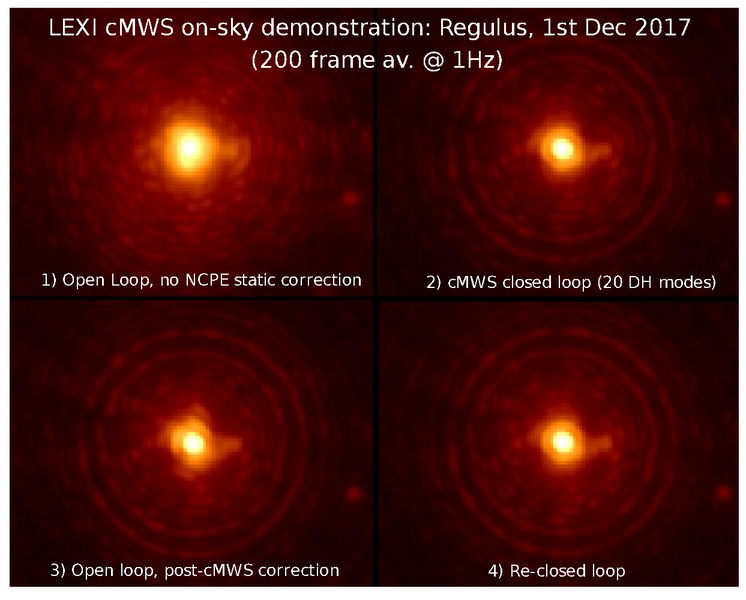




The Leiden EXoplanet Instrument (LEXI) is a bench-mounted high-contrast spectrograph (HCS) and HCI. Both science instruments are mounted behind a common adaptive optics (AO) system. The AO can be controlled by several new wavefront sensors for which we will show the first on-sky results. There is a new pupil-plane wavefront sensors; the g-ODWFS. LEXI can switch between two observing modes, the HCI mode or the HD-IFS mode. The spectrograph is very compact because it is fed by single-mode fiber. The HD-IFS is an IFS that covers the spectral range of 600 800 nm with a constant spectral resolving power of 96000. The 2kx3k detector makes it possible to deliver diffraction limited spectra of up to 20 input fibers. The high-dispersion spectra of the HD-IFS allow for robust post-processing technique to remove residual stellar speckles and allows for direct characterization of the faint stellar environment.
Related Publications
Haffert, S. Y., Wilby, M. J., Keller, C. U., Snellen, I. A. G., Doelman, D. S., Por, E. H., van Kooten, M., Bos, S. P., & Wardenier, J. 2018, Adaptive Optics Systems VI On-sky results of the Leiden EXoplanet Instrument (LEXI)
Haffert, S. Y., Wilby, M. J., Keller, C. U., & Snellen, I. A. G. 2016, Ground-based and Airborne Instrumentation for Astronomy VI The Leiden EXoplanet Instrument (LEXI): a high-contrast high-dispersion spectrograph

